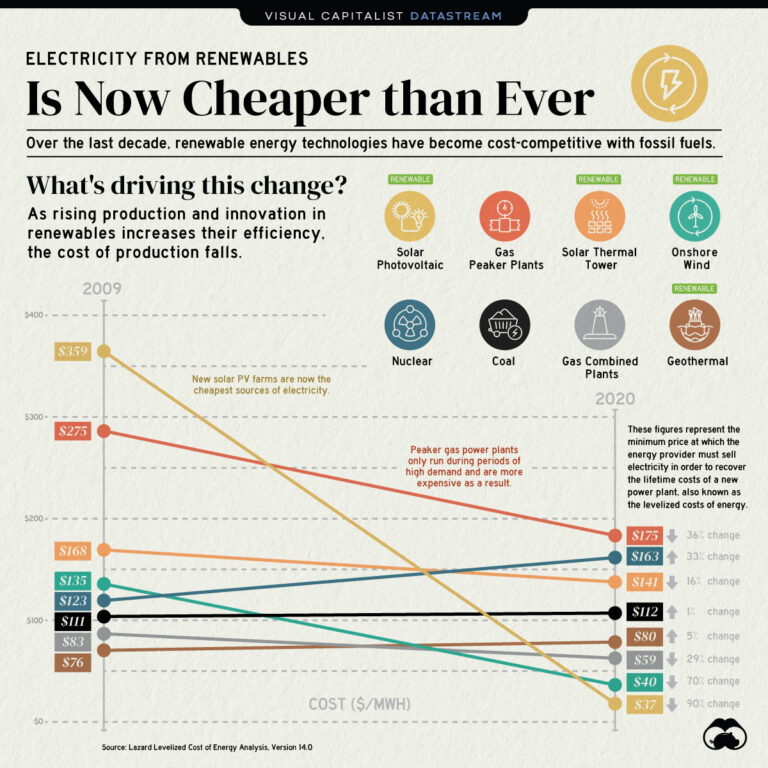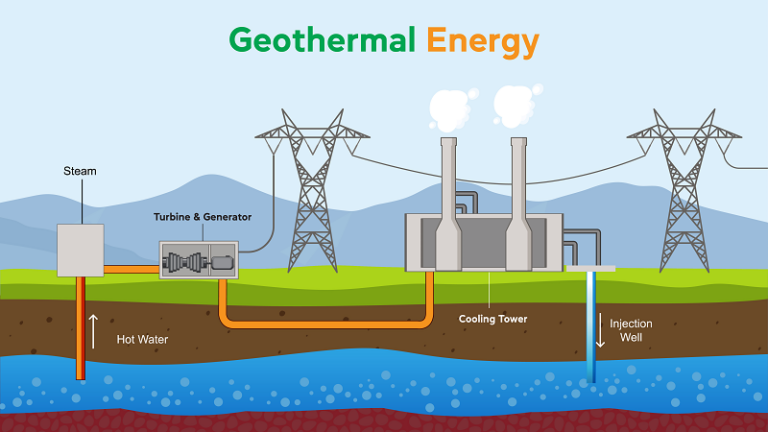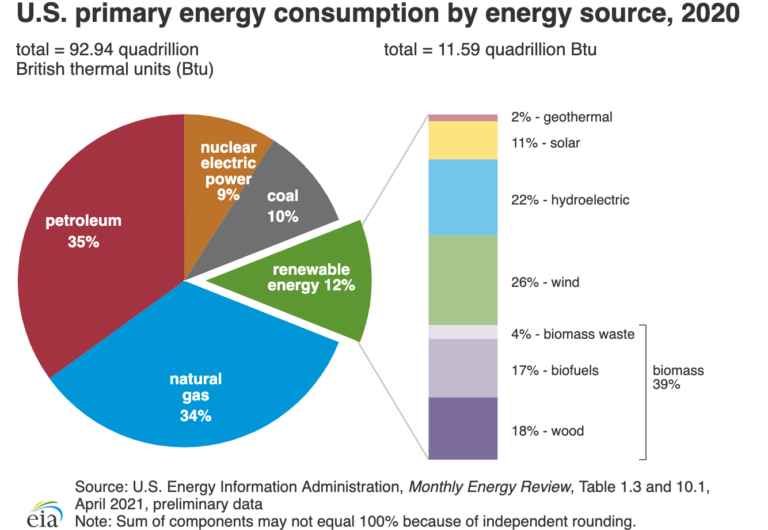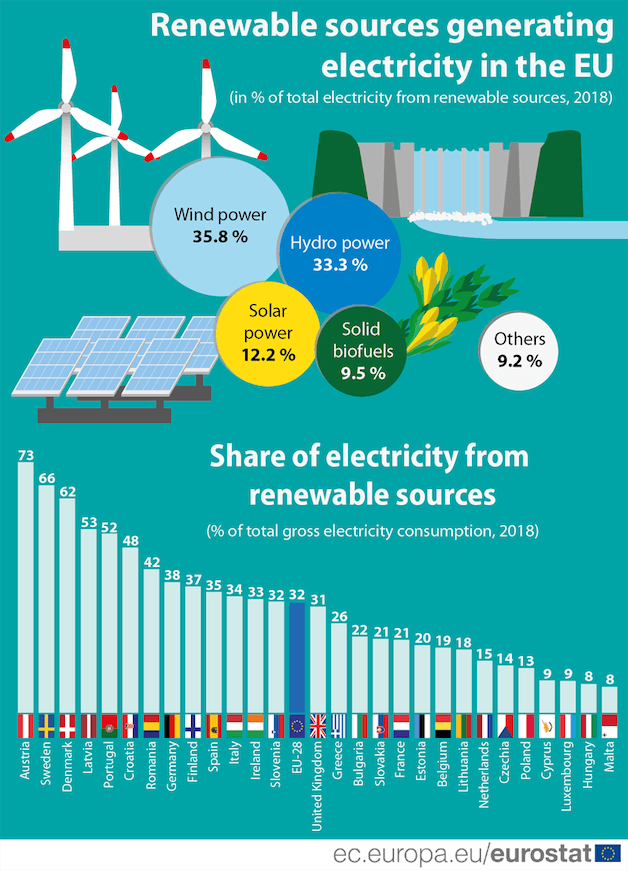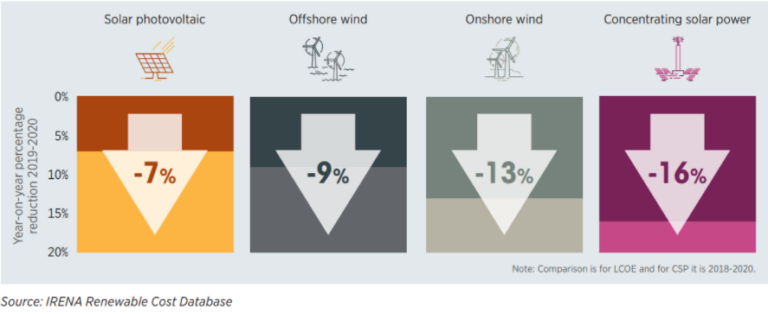Is CCUS And Green Hydrogen Considered Renewable Energy?
Is CCUS and green hydrogen considered renewable energy? Let’s dive into this fascinating topic and explore the answer together. Have you ever wondered if there are other sources of renewable energy beyond solar and wind power? Well, you’re in for a treat! In this article, we’ll explore whether CCUS (Carbon Capture, Utilization, and Storage) and green hydrogen can be considered renewable energy sources. So, buckle up and get ready for an exciting journey!
Now, you might be wondering, what exactly is CCUS and green hydrogen? CCUS is a process that captures carbon dioxide emissions from large industrial plants and stores them deep underground. On the other hand, green hydrogen is produced by using renewable energy sources, like wind or solar power, to split water into hydrogen and oxygen.
But are these technologies truly considered renewable energy? That’s the big question we’re here to answer. So, join us as we dive into the intricacies of CCUS and green hydrogen and explore whether they can be classified as renewable sources of energy. Get ready to expand your knowledge and uncover the secrets of these innovative technologies! Are you excited? Let’s get started!
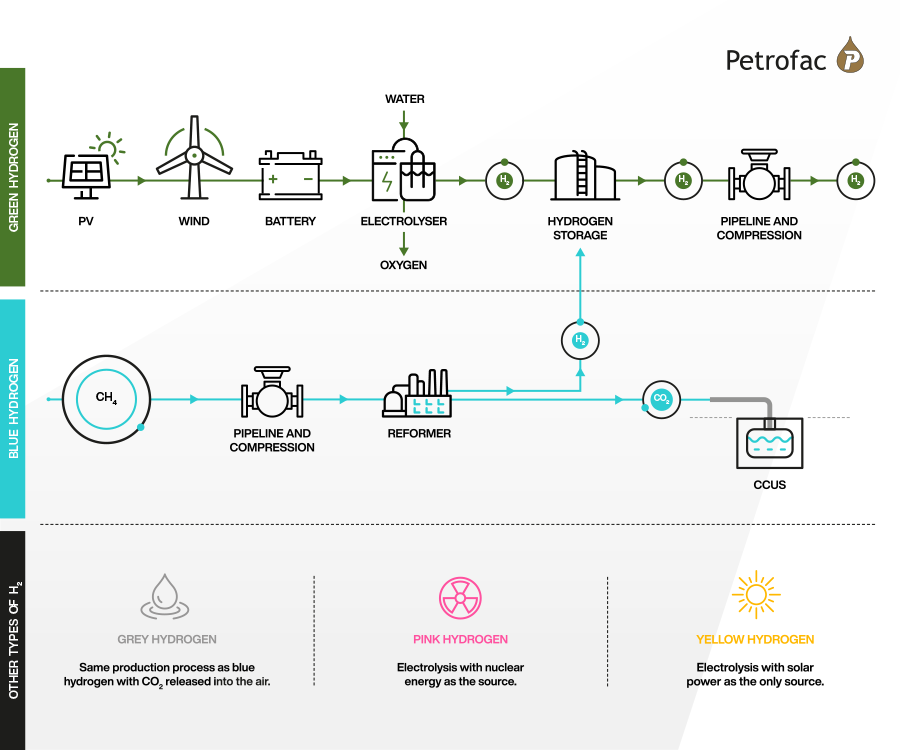
Is CCUS and Green Hydrogen Considered Renewable Energy?
Renewable energy sources have gained significant attention in recent years as the world seeks sustainable alternatives to traditional fossil fuels. Among the emerging technologies are Carbon Capture, Utilization, and Storage (CCUS) and green hydrogen. Both are touted as potential solutions to reduce greenhouse gas emissions and combat climate change. However, the question remains: Are CCUS and green hydrogen truly considered renewable energy? Let’s delve into the details and explore the intricacies of these technologies.
CCUS: The Promise of Reducing Carbon Footprint
Carbon Capture, Utilization, and Storage (CCUS) is a technology that aims to capture carbon dioxide (CO2) emissions from industrial processes or power plants and store them permanently underground or put them to use in other industries. The idea behind CCUS is to prevent CO2 from entering the atmosphere and contributing to global warming. By capturing and storing carbon emissions, CCUS has the potential to significantly reduce the carbon footprint of various industries.
CCUS technology encompasses three main steps: capture, utilization, and storage. The capture phase involves separating CO2 from other gases emitted during industrial processes, such as power generation or cement production. The captured CO2 can then be utilized for enhanced oil recovery or in industries that require carbon dioxide. Finally, the CO2 is transported to storage sites, usually deep underground, where it is stored permanently, reducing its impact on the environment.
While the intention behind CCUS is to reduce greenhouse gas emissions and mitigate climate change, it is important to note that the technology itself does not generate energy. CCUS is an add-on technology that captures and stores CO2 emitted from fossil fuel-based power plants or industrial processes. Therefore, it is not considered a source of renewable energy on its own.
Green Hydrogen: A Clean Fuel for the Future
Another technology that has garnered attention as a potential solution to reduce greenhouse gas emissions is green hydrogen. Unlike conventional hydrogen production methods, which rely on fossil fuels and emit CO2, green hydrogen is produced using renewable energy sources, such as solar or wind power.
The process of producing green hydrogen involves electrolysis, where water molecules are split into hydrogen and oxygen using electricity. The electricity used for this process is generated from renewable sources, ensuring that the hydrogen produced is carbon-free. Green hydrogen can be stored and transported, and it can be used as a fuel in various sectors, such as transportation, industry, and power generation.
Green hydrogen is considered a promising solution for decarbonizing sectors that are challenging to electrify directly, such as heavy-duty transportation or certain industrial processes. It offers a clean alternative to conventional fuels, reducing greenhouse gas emissions and contributing to a more sustainable future. However, it is crucial to clarify that green hydrogen is not a direct source of renewable energy itself but rather a means of storing and utilizing renewable energy.
Comparing CCUS and Green Hydrogen
While both CCUS and green hydrogen play a role in reducing greenhouse gas emissions, they differ in terms of their primary purpose and contribution to renewable energy efforts. CCUS focuses on capturing and storing CO2 emissions from industrial processes, effectively reducing the carbon footprint of existing industries. On the other hand, green hydrogen production utilizes renewable energy sources to produce a clean fuel alternative. Let’s delve deeper into the distinctions between these two technologies:
1. Purpose:
CCUS: The primary purpose of CCUS is to capture and store CO2 emissions from industrial processes, ultimately reducing the carbon footprint of existing industries.
Green Hydrogen: The purpose of green hydrogen is to produce a clean fuel alternative using renewable energy sources, reducing greenhouse gas emissions and contributing to decarbonization efforts.
2. Technology:
CCUS: CCUS technology involves capturing CO2 emissions from industrial processes, transporting the captured CO2, and storing it permanently underground or utilizing it in other industries. It does not directly generate energy or produce hydrogen.
Green Hydrogen: The production of green hydrogen involves electrolysis, where water is split into hydrogen and oxygen using renewable energy sources. This produces hydrogen gas that can be stored, transported, and used as a clean fuel alternative.
3. Impact on Renewable Energy:
CCUS: While CCUS can help reduce greenhouse gas emissions, it does not directly contribute to renewable energy generation. It is an add-on technology that aims to reduce the carbon footprint of existing industries.
Green Hydrogen: Green hydrogen production utilizes renewable energy sources to produce hydrogen, indirectly contributing to renewable energy generation. However, green hydrogen itself is a means of storing and utilizing renewable energy, rather than a direct source of renewable energy.
4. Applications:
CCUS: CCUS technology can be applied to various industries, such as power generation, cement production, and steel manufacturing, to capture and store CO2 emissions.
Green Hydrogen: Green hydrogen has a wide range of applications, including transportation, industry, and power generation. It can be used as a clean fuel alternative in sectors that are challenging to electrify directly.
While CCUS and green hydrogen have different purposes and impacts on renewable energy, they both play a crucial role in reducing greenhouse gas emissions and transitioning to a more sustainable future. CCUS focuses on mitigating carbon emissions from industrial processes, while green hydrogen offers a clean fuel alternative produced from renewable energy sources. By utilizing both technologies, we can make significant progress in the fight against climate change.
Benefits of CCUS and Green Hydrogen
Both CCUS and green hydrogen offer several benefits that make them attractive options in the pursuit of a clean and sustainable energy future. Let’s take a closer look at the advantages of these technologies:
Benefits of CCUS:
- Carbon Emission Reduction: CCUS technology helps reduce the carbon footprint of existing industries by capturing and storing CO2 emissions, thus contributing to global efforts to combat climate change.
- Preservation of Existing Infrastructure: CCUS allows industries that heavily rely on fossil fuels, such as power plants or steel mills, to continue operating while reducing their environmental impact.
- Potential for Enhanced Oil Recovery: The captured CO2 can be utilized in enhanced oil recovery (EOR) processes, improving the extraction of oil from existing reservoirs and increasing both energy production and the storage capacity of CO2 underground.
Benefits of Green Hydrogen:
- Carbon-Free Fuel: Green hydrogen is produced using renewable energy sources, ensuring that it is a carbon-free fuel alternative that can be used in various sectors, reducing greenhouse gas emissions.
- Energy Storage: Green hydrogen can be stored and transported, addressing the intermittency of renewable energy sources and providing a reliable and flexible energy storage solution.
- Decarbonization of Challenging Sectors: Green hydrogen offers a clean fuel alternative for sectors that are challenging to electrify directly, such as heavy-duty transportation or certain industrial processes, contributing to their decarbonization.
CCUS and Green Hydrogen: A Powerful Combination for Emissions Reduction
CCUS and green hydrogen can work hand in hand to accelerate the reduction of greenhouse gas emissions and combat climate change. By combining these technologies, we can harness the strengths of both and maximize their potential impact. Here’s how the combination of CCUS and green hydrogen can foster emissions reduction:
1. Utilization of CO2 from CCUS for Green Hydrogen Production
The captured CO2 from CCUS processes can be utilized in the production of green hydrogen. By combining these two technologies, we can ensure that the carbon emissions captured by CCUS are put to use in generating clean fuel alternatives, rather than being released back into the atmosphere. This synergy allows for the effective utilization of CO2 and contributes to further reducing greenhouse gas emissions.
2. Carbon-Free Hydrogen to Power CCUS Processes
Green hydrogen can also be used in the capture and storage processes of CCUS, replacing fossil fuel-based energy sources. By using carbon-free hydrogen as the energy input for CCUS technology, we can minimize the carbon footprint associated with capturing and storing CO2 emissions. This integration enhances the overall sustainability of the CCUS process.
3. Joint Infrastructure and Investment
By integrating CCUS and green hydrogen technologies, there is the potential to share infrastructure and investment costs. Both technologies require similar transport, storage, and utilization capabilities. By developing shared infrastructure, we can optimize resources and reduce overall costs, making it more economically viable to implement these solutions on a larger scale.
It is important to note that while the combination of CCUS and green hydrogen offers significant potential for emissions reduction, it is not a silver bullet solution. The transition to a sustainable energy future requires a diverse and integrated approach, leveraging a mix of renewable energy sources, energy efficiency measures, and other clean technologies.
Conclusion
CCUS and green hydrogen are innovative technologies that can significantly contribute to the reduction of greenhouse gas emissions and the transition to a more sustainable energy future. While CCUS focuses on capturing and storing CO2 emissions from various industries, green hydrogen offers a clean fuel alternative produced from renewable energy sources.
Both technologies have their respective benefits and applications, and when integrated, they can further enhance their impact. By utilizing CO2 captured by CCUS technology in the production of green hydrogen and using carbon-free hydrogen in CCUS processes, we can maximize emissions reduction and promote a circular carbon economy. Additionally, the joint infrastructure and shared investment opportunities make the combination of CCUS and green hydrogen economically viable.
It is important to continue researching and developing these technologies to improve their efficiency, scalability, and cost-effectiveness. The integration of CCUS and green hydrogen, along with other clean energy solutions, holds great promise in combating climate change and creating a more sustainable future for generations to come.
Key Takeaways
- Carbon capture, utilization, and storage (CCUS) and green hydrogen are not considered renewable energy sources.
- CCUS involves capturing carbon dioxide emissions from power plants or industrial facilities and storing them underground, while green hydrogen is produced using renewable energy sources.
- Renewable energy sources include solar power, wind power, hydropower, and geothermal energy.
- CCUS and green hydrogen can play a role in reducing greenhouse gas emissions and transitioning to a cleaner energy future, but they are not classified as renewable energy.
- It is important to continue investing in and expanding renewable energy sources to achieve sustainable and clean energy systems.
Frequently Asked Questions
Here, we have compiled some commonly asked questions related to CCUS (Carbon Capture, Utilization, and Storage) and green hydrogen, and whether they can be considered renewable energy sources.
1. How does CCUS contribute to renewable energy?
CCUS does not directly contribute to renewable energy, but it plays a crucial role in reducing emissions from fossil fuel-based power plants. CCUS technology captures carbon dioxide (CO2) emissions from industrial processes, prevents them from being released into the atmosphere, and stores them underground or utilizes them in various ways. While this technology helps mitigate the environmental impact of burning fossil fuels, CCUS itself is not considered a renewable energy source.
However, some argue that CCUS can be paired with renewable energy sources to create a low-carbon system, known as carbon-negative energy. By combining CCUS with renewable energy generation, such as wind or solar power, the overall emissions from energy production can be significantly reduced.
2. What is green hydrogen, and is it considered a renewable energy source?
Green hydrogen is produced through a process called electrolysis, where renewable electricity is used to split water molecules into hydrogen and oxygen. This method produces hydrogen without releasing any carbon dioxide emissions, making it a cleaner alternative to hydrogen produced from fossil fuels. However, whether it is considered a renewable energy source depends on the source of the electricity used for electrolysis.
If the electricity used in the electrolysis process comes from renewable sources such as solar, wind, or hydroelectric power, then green hydrogen can be considered a renewable energy source. On the other hand, if the electricity is generated from fossil fuels, such as coal or natural gas, the production of green hydrogen would still result in carbon emissions and would not be considered renewable.
3. Can CCUS and green hydrogen help in reducing greenhouse gas emissions?
Absolutely. Both CCUS and green hydrogen have the potential to significantly reduce greenhouse gas emissions. CCUS technology enables the capture and storage or utilization of carbon dioxide emissions, preventing them from being released into the atmosphere. This helps in mitigating climate change by reducing the concentration of greenhouse gases in the atmosphere.
Similarly, green hydrogen, produced using renewable electricity, emits no carbon dioxide during its production or use. It can replace fossil fuels in various applications, such as transportation or industrial processes, thus helping to reduce overall greenhouse gas emissions. By combining CCUS and green hydrogen technologies, it is possible to achieve even greater reductions in greenhouse gas emissions.
4. Are there any limitations or challenges with CCUS and green hydrogen?
While CCUS and green hydrogen offer promising solutions for reducing emissions, there are some limitations and challenges to consider. One of the main challenges is the cost associated with implementing these technologies on a large scale. Currently, both CCUS and green hydrogen production can be expensive compared to conventional alternatives.
In addition, the infrastructure required for widespread adoption of CCUS and green hydrogen is still being developed. Building and maintaining the necessary pipelines, storage facilities, and electrolysis plants can be a significant logistical and financial undertaking.
5. What is the potential impact of CCUS and green hydrogen on the energy transition?
CCUS and green hydrogen can play a vital role in the energy transition towards a more sustainable future. The integration of CCUS with existing fossil fuel-based power plants can help reduce emissions and buy time for the development and deployment of renewable energy sources. It allows for a smoother transition by mitigating the environmental impact of fossil fuel use.
Green hydrogen, on the other hand, has the potential to replace fossil fuels in various sectors, including transportation and industry. As the world seeks to achieve net-zero emissions, green hydrogen can provide a reliable and sustainable alternative to traditional energy sources, contributing to a greener and more sustainable energy system.
Summary
So, is CCUS and green hydrogen considered renewable energy? Well, the answer is not quite clear-cut. While some experts argue that CCUS could be considered renewable, others believe it is more of a transitional technology. Green hydrogen, on the other hand, is generally regarded as a renewable energy source. However, it’s important to note that both CCUS and green hydrogen have their limitations and should be seen as part of a larger strategy to combat climate change. Ultimately, finding sustainable and renewable solutions is crucial for a cleaner and greener future.
In conclusion, CCUS and green hydrogen offer potential pathways to reduce greenhouse gas emissions, but their place within the renewable energy landscape is still a topic of debate. It’s important to continue researching and investing in truly renewable energy sources to ensure a sustainable and environmentally friendly future for generations to come.

